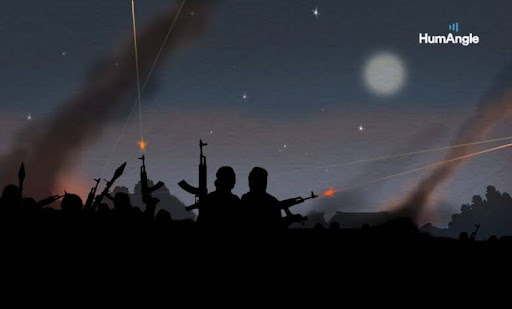With over 330,000 battle-related deaths in three years, Africa is the region most affected by state-based conflicts, with 28 recorded in 2023, nearly doubling from 15 in 2013, according to a new report by the Peace Research Institute Oslo (PRIO).
A new report released by the Peace Research Institute Oslo (PRIO), a multidisciplinary organization working on the drivers of violent conflicts, shows that 2023 experienced the highest number of state-based conflicts since 1946, with Africa being the hardest hit over several decades.
The report, which painted a global conflict landscape, has highlighted the severe and growing impact on Africa, showing that as conflicts proliferate and evolve, the challenge for global peacekeepers, aid organizations, and policymakers becomes ever more tasking.
The Institute’s conflict trend analysis indicates that 2023 saw 59 conflicts globally, marking the most violent three-year period in decades. However, the number of countries directly impacted has shrunk from 39 to 34.
The fall in the number of countries affected by conflict, according to the PRIO, was a result of some countries reducing the number of conflicts they engaged in but increasing the number of non-state actors involved in violence, particularly in the Americas.
“Violence in the world has been at an all-time high since the end of the Cold War,” stated Siri Aas Rustad, Research Professor at PRIO and lead author of the report titled PRIO’s Conflict Trends: A Global Overview report. “The figures suggest that the conflict landscape has become increasingly complex, with more conflict actors operating within the same country.”
The report, which examined global conflict trends from 1946 to 2023, utilises data from the Uppsala Conflict Data Program at Uppsala University. It aims to provide insights for policymakers and practitioners working in conflict-affected areas.
The report explained that one of the key factors behind the increase in state-based conflicts is the expansion of the Islamic State (IS) across Asia, Africa, and the Middle East, along with increased involvement from other non-state actors like the Jama’at Nusrat al-Islam wal-Muslimin (JNIM) group.
IS has increasingly indicated its interest in shifting operations to Africa and now claims more than half of its operations on the continent. The Al-Qaeda affiliates in Africa, such as JNIM and Al-Shabaab, have also continued waging monstrous attacks in their spheres of control and influence.
“This development makes it increasingly difficult for actors like aid groups and civil society organizations to manoeuvre the conflict landscape and improve the lives of ordinary people,” Rustad noted.
While the number of battle deaths fell in 2023, the past three years have been the deadliest in recent history, largely due to the civil war in Ethiopia’s Tigray region, the Russian conflict with Ukraine, and the bombing of Gaza by Israel.
According to the report, in 2023 alone, there were 122,000 battle deaths, with over 71,000 occurring in Ukraine and around 23,000 in Gaza in under three months.
Africa is the region most affected by state-based conflicts, with 28 recorded last year, nearly doubling from 15 in 2013. Over the past three years, Africa has witnessed more than 330,000 battle-related deaths, making it the deadliest continent in terms of conflict. This dramatic increase underscores the continent’s struggle with violent unrest and complex conflict dynamics.
According to the report, the Middle East saw a reversal in the decline of conflicts, increasing from eight in 2022 to ten in 2023. Battle-related deaths in the Middle East surged from slightly more than 5,000 in 2022 to almost 26,000 in 2023, with the vast majority of these deaths occurring in Israel and Palestine.
“The Middle East figures give hope that extreme violence and complex conflicts such as those in Syria can diminish,” said Rustad. “On the other hand, it is a continuous worry that we see new extremely violent conflicts emerging more often than previously.”

